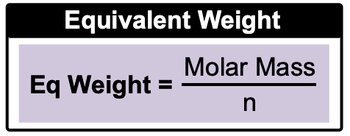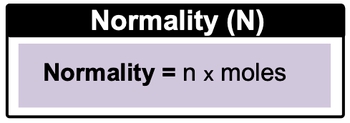We can say that equivalents are used to measure the number of H+OH- ions in acids and bases respectively. We're going to say when it comes to the equivalent of an acid, it's the amount of acid that contributes 1 mole of acidic H+ ions. And equivalence of a base is the amount of base that contributes 1 mole of OH- ions. For example, we have 1 mole of hydrobromic acid. It possesses in it 1 H+ ion. That 1 H+ ion is equal to its one equivalent. Here we have 1 mole of calcium hydroxide. It has 2 hydroxides in it, so that's 2 equivalents of calcium hydroxide.
Now we'll go into further detail where what if the moles of the acid and base are different, that can help vary the number of equivalents. So click on the next video. Let's continue talking about, equivalence when it comes to acids and bases.




